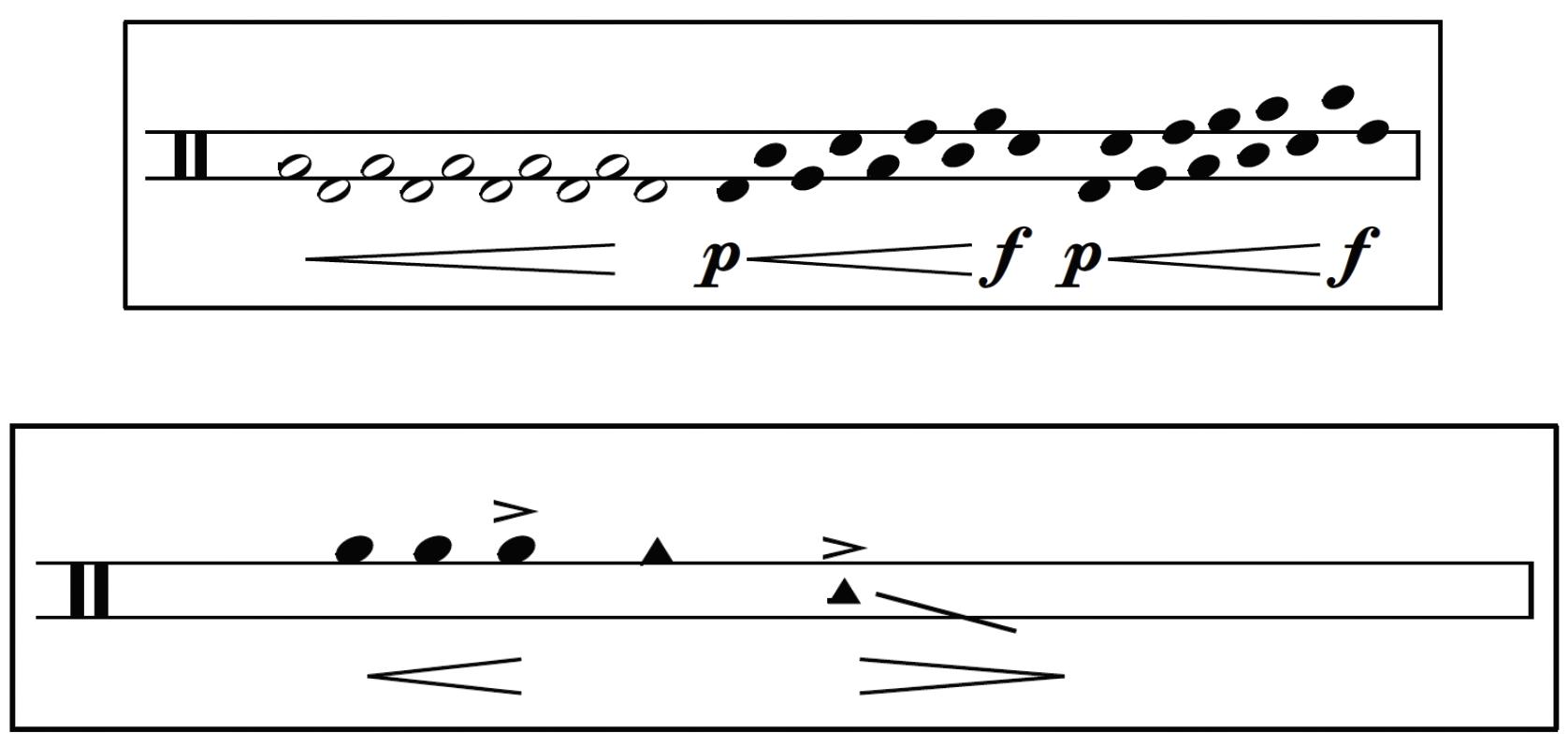SIDE-BLOW for solo percussion improviser (2021) for Josh Perry
Instrumentation
Duration
Amplified China Cymbal (22”or larger) ca. 9 min

Performance notes
Mallets/implements:


Small grains or beans such as mung beans,
2 jazz brushes, tuning fork and a hard rubber beater,
2 double bass bows
Section 1- with beans (ca. 1’00”-1’30”)
Part 1 (ca. 45-60 seconds)
Prepare the cymbal by placing ca. 15-20 tiny beans (e.g. mung beans) in the valley of cymbal. Grab the cymbal with both hands, tilt and swivel to make beans swirl around the cymbal to make soft rain like sound. As it gains momentum, throw more beans (10-20) on the cymbal and repeat 3-4 times. Adjust the speed with hands if necessary, so that the beans run smoothly but not fall off the cymbal Begin with slow speed and gradually make the beans swirl faster and faster


Part 2 (ca. 15-30 seconds)
Increase the speed of the beans so that they swirl fast enough to rush to fall off the cymbal until there’s no beans left on the surpass of the cymbal

Section 2- with hands and brushes (ca. 2’00” - 2’30”)
Part 1 (ca.1’00”)
Play all of the given gestures at least once Then explore various sounds on the cymbal playing first only with hands, then one hand and one brush

Part 2 (ca.1’00”)
With the given gestures, explore various sounds on the cymbal playing with 2 brushes. However, feel free to use all parts of the brushes including metal brush, 3

rubber part, and metal ring of the tip Using all these parts and various areas of the cymbal, begin with the given gestural ideas, then gradually develop more and more with the Performer's own improvisational ideas.
Section 3- with tuning fork (ca. 1’30” - 2’00”)
Hit the tuning fork then place the tuning fork on different spots of the cymbal Explore different spots on the cymbal to find best ringing places to obtain a certain overtone series which rings somewhat like multiphonics Try to find at least 3 different sounding multiphonics and mark those 3 spots on your cymbal with Alphabet A, B, and C These 3 spots should produce various colors or partials
Play as indicated in the box Each time hit the tuning fork before placing it on the cymbal, then let it finish ringing The duration of each one should depend on how long the tuning fork rings on the cymbal. As soon as the sound fades away, hit the tuning fork again. At the end of each line, take 1-2 seconds of a short break for breathing before proceeding to the next line or scrape the cymbal with metal part of the tuning fork and let it vibrate Toward the end of section 3 add more and more scraping gestures to build transition to the section 4
Section 4- with bows (ca. 2’30” - 3’00”)

Part 1 (ca. 2’00”-2’30”)
Bow the cymbal edge up and/or down, as the fingers of the other hand touching certain spots either on top or underneath of the cymbal to produce multiphonics (spectrum of overtones) Try to obtain a variety of different register multiphonics (e.g. low register with low partials/ high register with high partials) which is somewhat screaming (out cry) like sound Feel free to bow down slow and fast, and soft and loud as desired Explore your own particular cymbal knowing every cymbal reacts differently with bowing techniques


Part 2 (ca. 0’30”)
End with final boxed gesture notated on the left.
